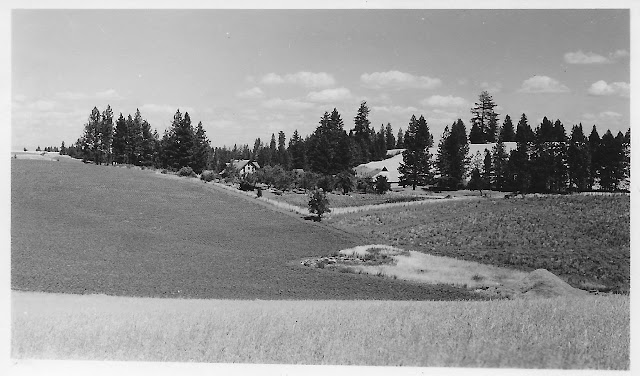 |
| The old Dobson Homeplace -- never a modern place |
I have been trying and posting recipes from “Brer Rabbit’s Modern Recipes for the Modern Hostess.” Several posts ago, I reported that you could find this booklet on Amazon (here), but today as I looked at it again, I noticed that Amazon’s copy is titled, “Brer Rabbit’s Modern Recipes for Modern Living.” Otherwise the cover is the same. My booklet doesn’t carry a copyright date, so I wonder if “Modern Living” is an update of “Modern Hostess” or vice versa.
 |
| Not even up-to-date when new |
My
mother used to say “modish,” as in “What a cute hat! It’s modish." (Fashionable or stylish in a modern way.) I thought the word was rather old-fashioned, but apparently we still use it. In the ‘60s, we liked “mod.” Then it seems
like we quit using "modern" so much, but online research tells
me I could be wrong about that. Still, I think we use the word with more care.
 |
| Updated today but not "state of the art" |
But
the goal of society was to modernize – and to modernize the farm as well. And in this regard, daughter Hallie sent me a link to a YouTube video about modernizing the farm kitchen which was produced in 1949 (here). It's less than 15 minutes long. I'll share my thoughts on it in a future post. KW
4 comments:
I love that view showing the orchard neatly planned. Do you think they kept bees?
No one ever said they kept bees. And when we had a wasp nest on the house, Daddy had Mr. Musser, who did keep bees, come over and take it down. He donned a white jumpsuit with a hood and face netting. The rest of us stayed out of the way while he did his work. It seems like they had a bonfire going and the nest was tossed onto the fire.
But then -- no one ever said they had an orchard either, and obviously they did. I think this photo was probably taken in the '20s, but there's some evidence that they had fruit trees until the '40s.
Enjoyed the video! The stove was like the one we had when I was little, complete with deep well in the back left corner.
Hi Chris! Our stove was like that, too. The knobs were on the front of the stove where any kid could turn them -- and I did. Mother seldom used the well, and that concept went by the wayside. One handy feature was an electric outlet on the back of the stove, another idea that was discarded for safety reasons. Mother lamented that, though, because she could no longer make 7-minute frosting (a divinity-type) which required beating while heating.
Post a Comment